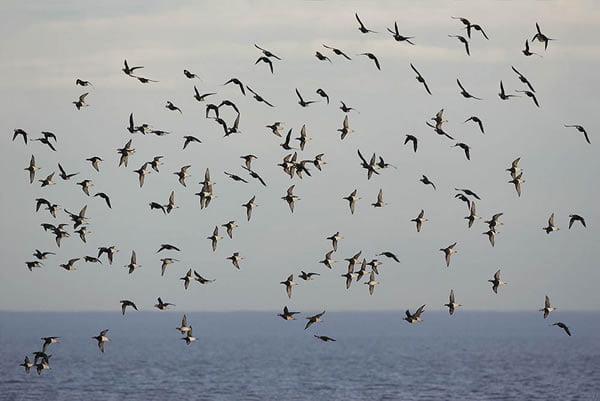Year Funded: 2004 (year endorsed)
Lead Institution(s): USGS National Wildlife Health Center
Project Lead: J. Christian Franson
Collaborator(s): Tuula Hollmen (ASC), Lee Skerratt (USGS), BPAK,
Focal Species: Long-tailed Duck (Clangula hyemalis)
Project Description: Breeding populations of long-tailed ducks have declined in Alaska since the 1970s. The identification of causes of mortality is critical to an understanding of the population declines, but little information is available regarding infectious diseases that may affect this species. During the summer of 2000, a die-off occurred in long-tailed ducks molting in the Beaufort Sea and laboratory evaluation of tissues from carcasses collected at the mortality site resulted in the isolation of an adenovirus. Antibodies to the virus were found in a high percentage of long-tailed ducks trapped near the mortality site, but few ducks at a reference area. We are collecting serum samples and cloacal swabs from long-tailed ducks in the Beaufort Sea to follow year-to year changes in the status of the virus in the population. The objectives of this study are to: (1) Determine the prevalence of the adenovirus in molting long-tailed ducks based on virus isolation from cloacal swabs and serum antibodies to the virus; (2) Identify any cases of mortality associated with the virus; (3) Determine the pathogenicity of the virus; and (3) Develop a polymerase chain reaction (PCR) test for the virus.
SDJV09 Final Report FY04
Related Publications
Hollmén, T. E., J. Christian Franson, P. L. Flint, J. B. Grand, R. B. Lanctot, D. E. Docherty, and H. M. Wilson. 2003. An Adenovirus Linked to Mortality and Disease in Long-Tailed Ducks (Clangula hyemalis) in Alaska. Avian Diseases 47:1434–1440. https://doi.org/10.1637/7029
Counihan, K. L., L. F. Skerratt, J. C. Franson, and T. E. Hollmén. 2015. Phylogenetic and pathogenic characterization of novel adenoviruses isolated from long-tailed ducks (Clangula hyemalis). Virology 485:393–401. https://doi.org/10.1016/j.virol.2015.07.026
